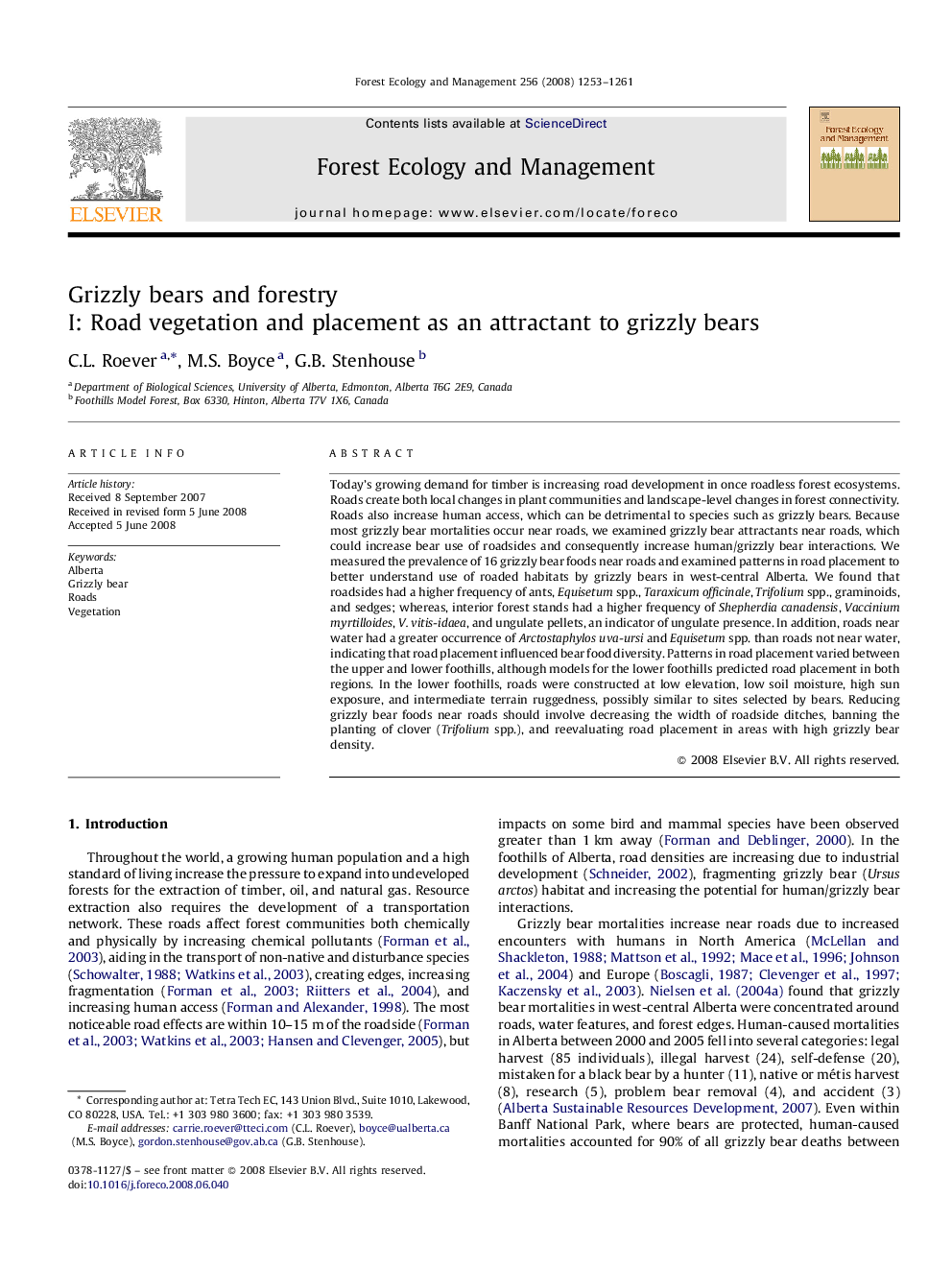| Article ID | Journal | Published Year | Pages | File Type |
|---|---|---|---|---|
| 89536 | Forest Ecology and Management | 2008 | 9 Pages |
Today's growing demand for timber is increasing road development in once roadless forest ecosystems. Roads create both local changes in plant communities and landscape-level changes in forest connectivity. Roads also increase human access, which can be detrimental to species such as grizzly bears. Because most grizzly bear mortalities occur near roads, we examined grizzly bear attractants near roads, which could increase bear use of roadsides and consequently increase human/grizzly bear interactions. We measured the prevalence of 16 grizzly bear foods near roads and examined patterns in road placement to better understand use of roaded habitats by grizzly bears in west-central Alberta. We found that roadsides had a higher frequency of ants, Equisetum spp., Taraxicum officinale, Trifolium spp., graminoids, and sedges; whereas, interior forest stands had a higher frequency of Shepherdia canadensis, Vaccinium myrtilloides, V. vitis-idaea, and ungulate pellets, an indicator of ungulate presence. In addition, roads near water had a greater occurrence of Arctostaphylos uva-ursi and Equisetum spp. than roads not near water, indicating that road placement influenced bear food diversity. Patterns in road placement varied between the upper and lower foothills, although models for the lower foothills predicted road placement in both regions. In the lower foothills, roads were constructed at low elevation, low soil moisture, high sun exposure, and intermediate terrain ruggedness, possibly similar to sites selected by bears. Reducing grizzly bear foods near roads should involve decreasing the width of roadside ditches, banning the planting of clover (Trifolium spp.), and reevaluating road placement in areas with high grizzly bear density.
